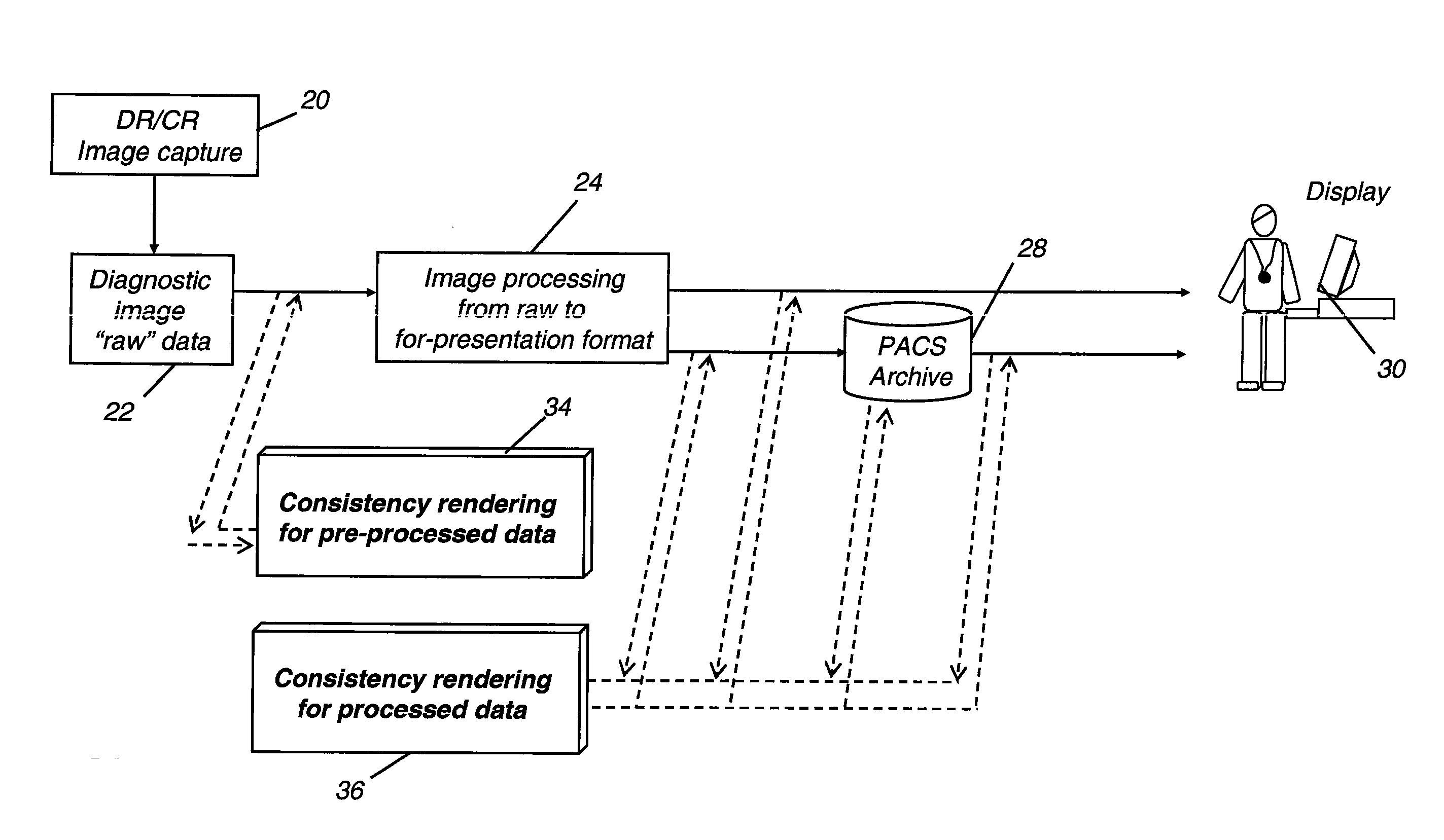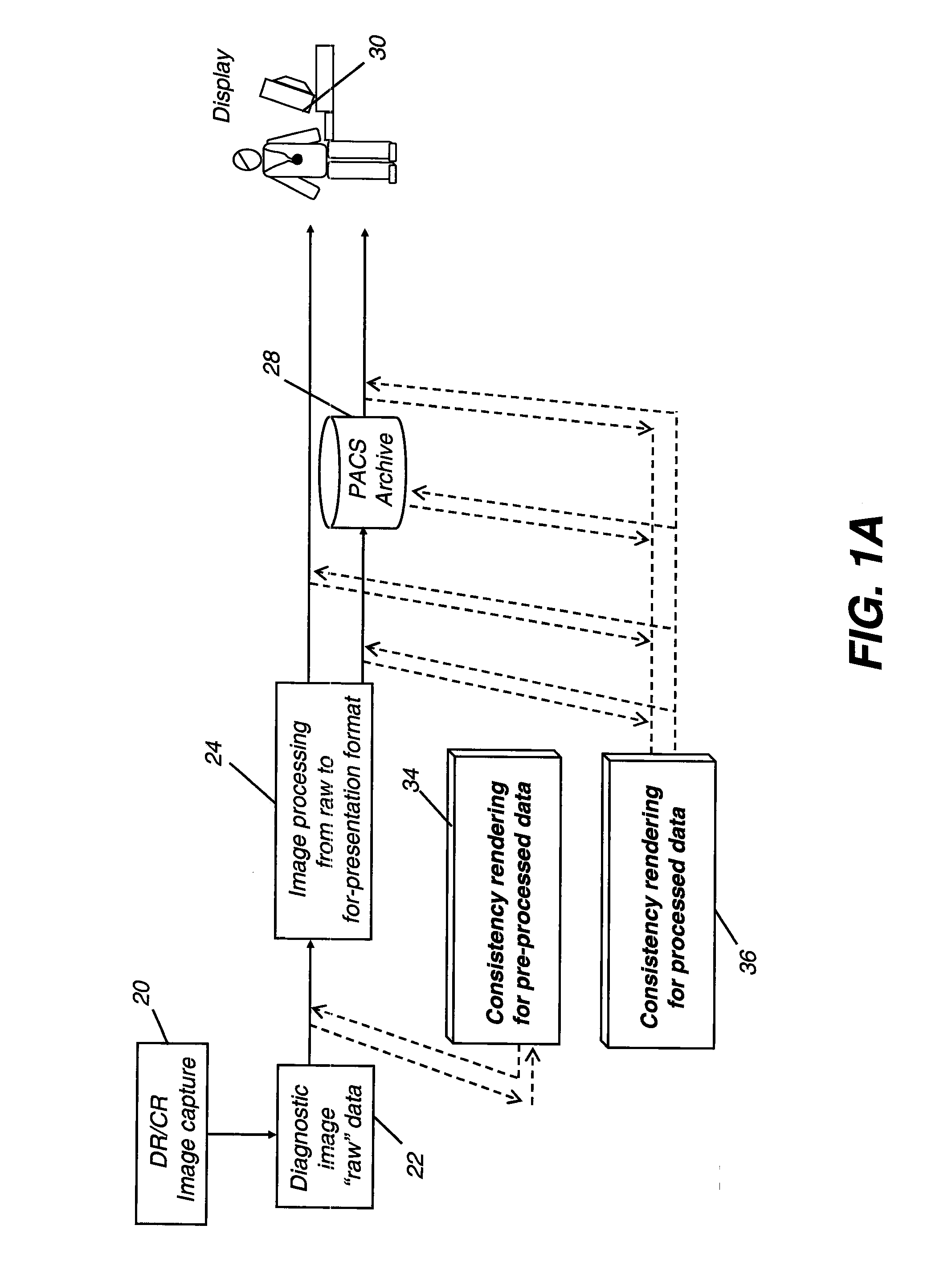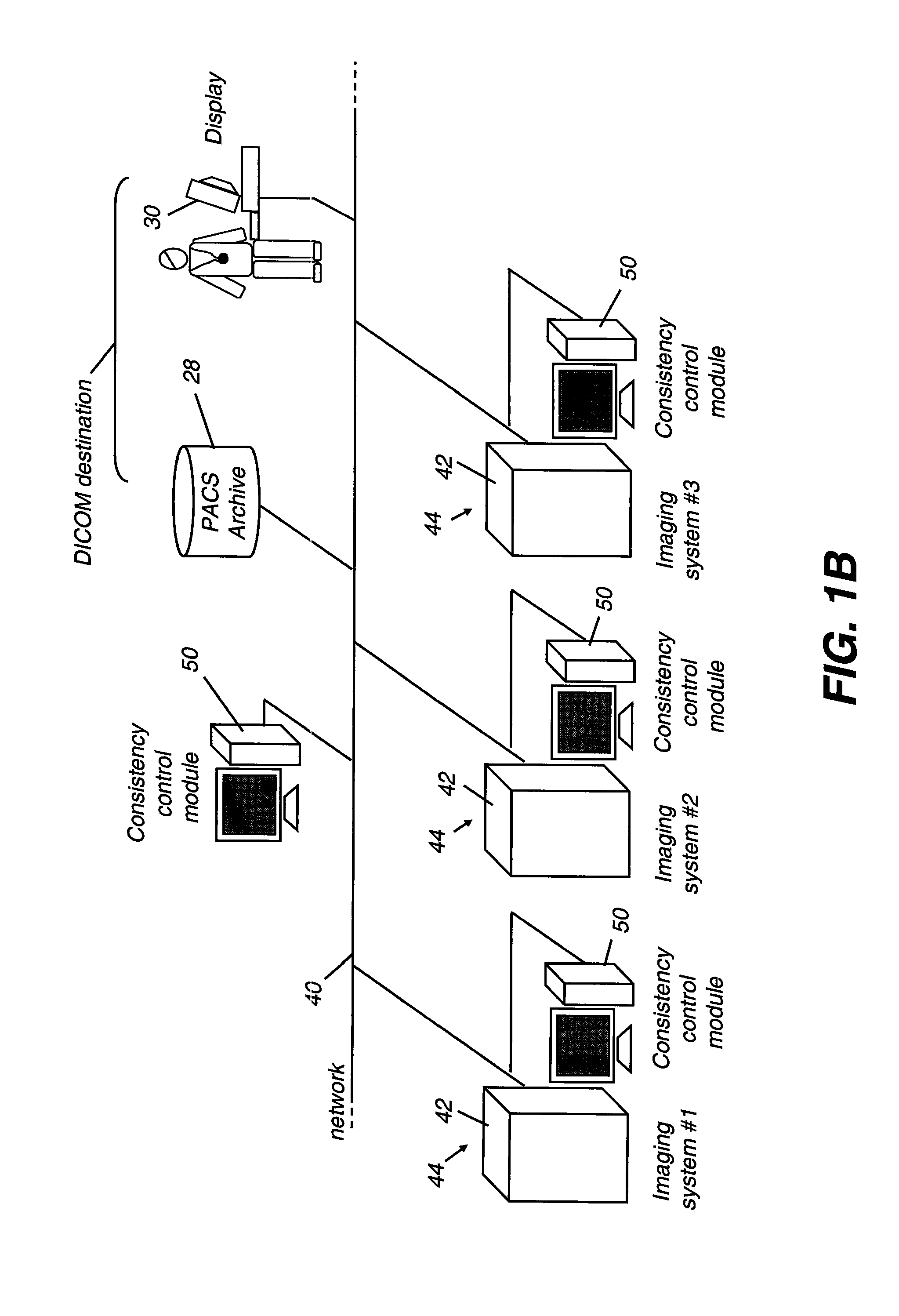Rendering for improved diagnostic image consistency
- Summary
- Abstract
- Description
- Claims
- Application Information
AI Technical Summary
Benefits of technology
Problems solved by technology
Method used
Image
Examples
Embodiment Construction
[0035]The present description is directed in particular to elements forming part of, or cooperating more directly with, apparatus in accordance with the invention. It is to be understood that elements not specifically shown or described may take various forms well known to those skilled in the art.
[0036]Reference is made to U.S. Patent Application Publication No. 2008 / 0118139 entitled “ROI-based Rendering for Diagnostic Image Consistency” by Huo et al. filed 22 Dec. 2006, commonly assigned, and incorporated herein by reference.
[0037]The term “DICOM destination” refers to a device on a DICOM (Digital Imaging and Communications in Medicine) network. By definition, a DICOM destination could be a display or an archival system, such as a PACS (Picture Archiving and Communications System) that uses one or more computers or networks dedicated to the storage, retrieval, distribution, and presentation of medical images. The most common standard format for image storage is DICOM format.
[0038]...
PUM
 Login to View More
Login to View More Abstract
Description
Claims
Application Information
 Login to View More
Login to View More - R&D
- Intellectual Property
- Life Sciences
- Materials
- Tech Scout
- Unparalleled Data Quality
- Higher Quality Content
- 60% Fewer Hallucinations
Browse by: Latest US Patents, China's latest patents, Technical Efficacy Thesaurus, Application Domain, Technology Topic, Popular Technical Reports.
© 2025 PatSnap. All rights reserved.Legal|Privacy policy|Modern Slavery Act Transparency Statement|Sitemap|About US| Contact US: help@patsnap.com



